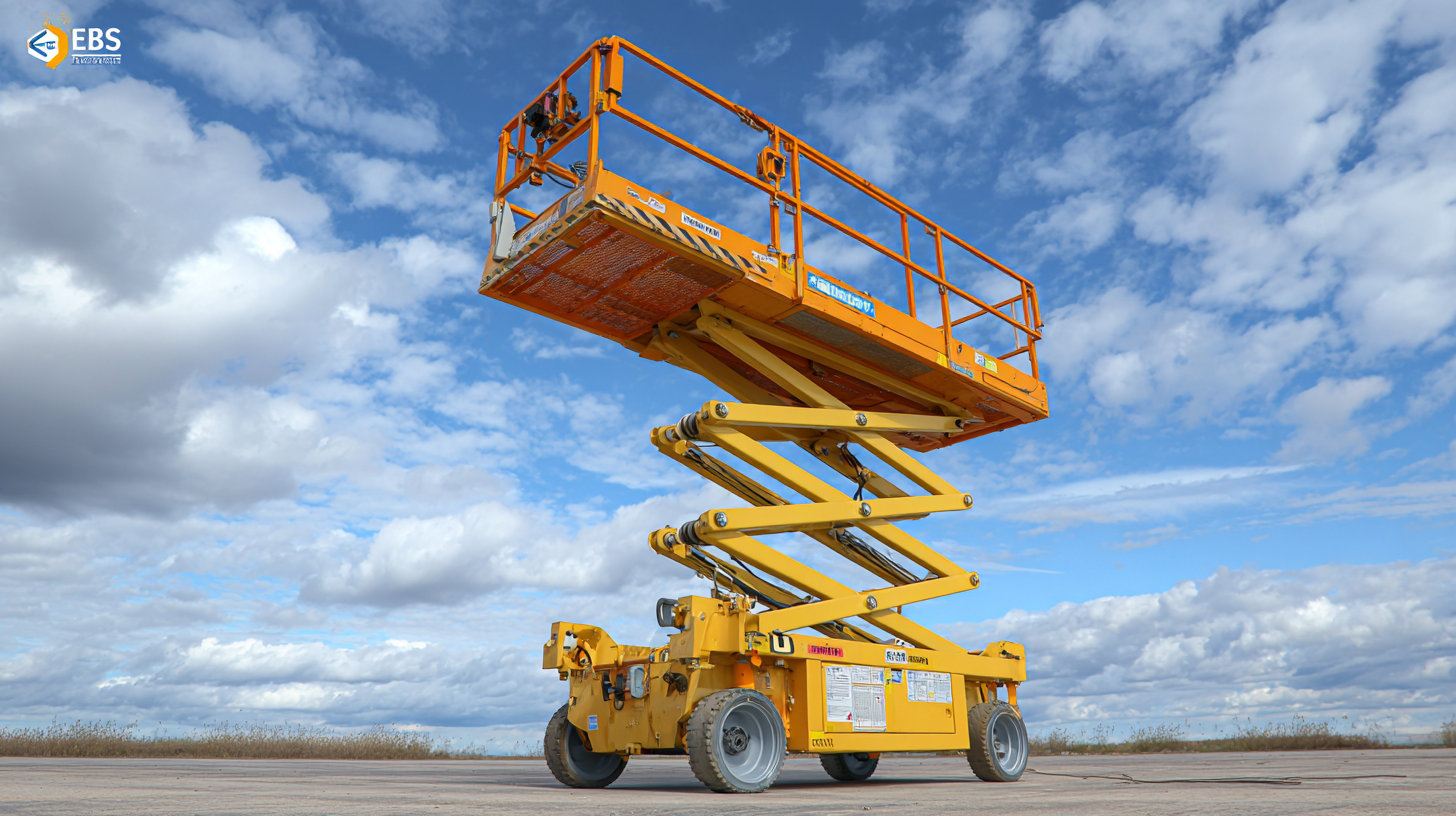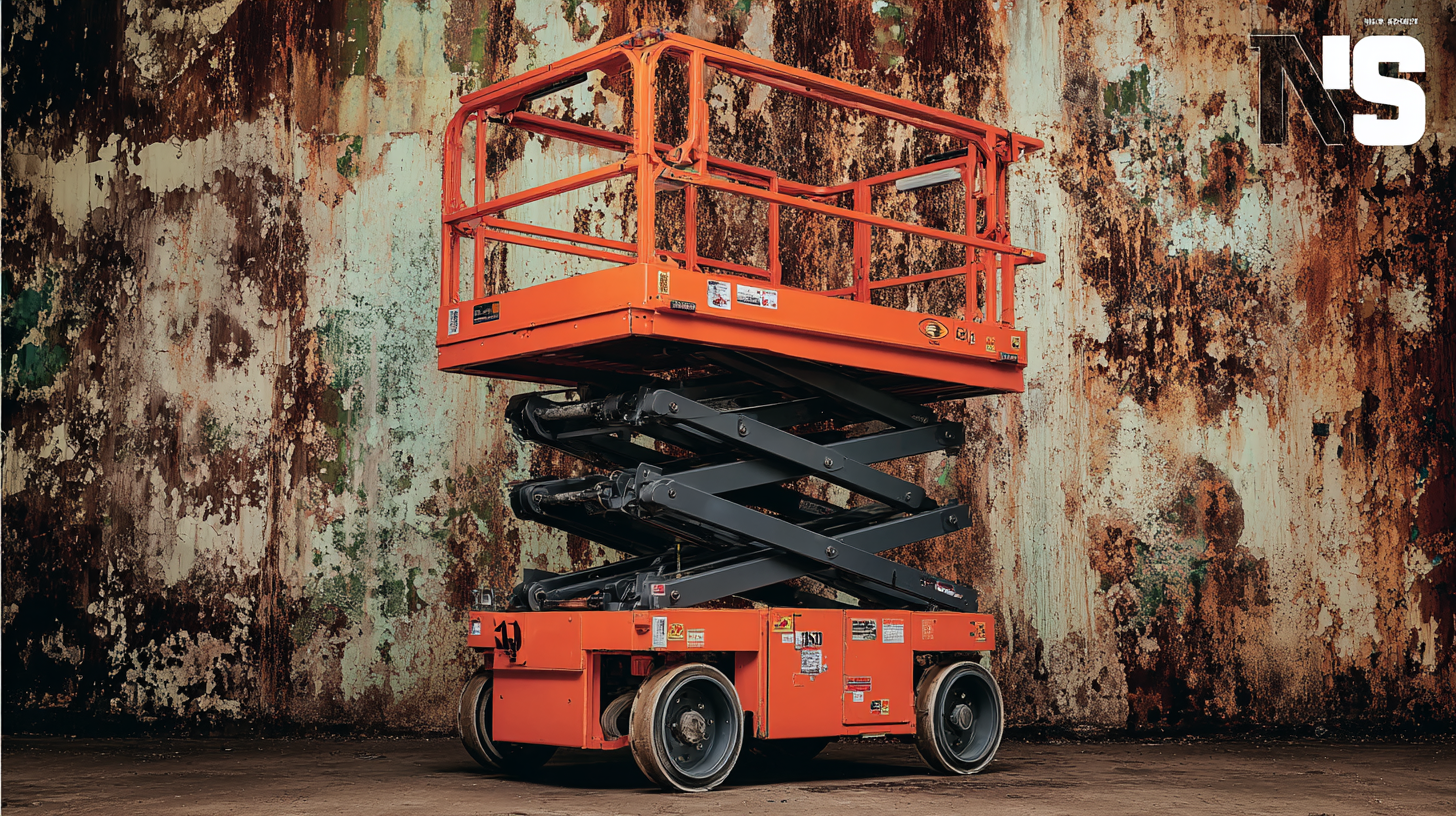Solutions for Optimizing Your Operations with Best Scissor Lifts
In the ever-evolving landscape of modern industries, the efficient use of equipment is paramount for optimizing operations. Scissor lifts have emerged as essential tools, providing safe and effective access to elevated work areas, thus enhancing productivity across various sectors.
According to a recent report by Allied Market Research, the global scissor lift market is projected to reach $4.5 billion by 2027, growing at a CAGR of 6.5%. This surge underscores the increasing reliance on aerial work platforms to streamline operations and reduce labor costs.
By implementing top strategies for optimizing the use of scissor lifts, organizations can not only maximize their operational efficiency but also ensure workplace safety and improve project turnaround times.

In this blog, we will explore the best practices for integrating scissor lifts into your business operations, driving both performance and profitability.
Benefits of Using Scissor Lifts in Various Industries
Scissor lifts have become an indispensable tool across various industries, providing safe and efficient solutions for aerial work. According to a report by Grand View Research, the global scissor lift market is expected to reach USD 3.8 billion by 2025, growing at a CAGR of 3.7%. This growth is driven by the increased demand for height access equipment in sectors like construction, warehousing, and maintenance. In construction, for instance, scissor lifts allow workers to elevate materials and perform tasks at heights that would otherwise be hazardous, reducing the risk of falls—with the Occupational Safety and Health Administration (OSHA) noting that falls are one of the leading causes of fatalities in the workplace.

In addition to safety, scissor lifts enhance operational efficiency. The ability to maneuver easily in tight spaces makes them ideal for warehouse and retail environments. A study by the Association of Equipment Manufacturers (AEM) found that companies utilizing aerial lifts reported productivity boosts of up to 20%. This efficiency translates to significant cost savings, as fewer manpower hours are needed to complete tasks. Moreover, scissor lifts can accommodate a variety of attachments, making them versatile for different applications—from loading docks to maintenance work, propelling various industries toward optimized operations.
Key Features to Look for in Scissor Lifts for Optimal Performance
When selecting the best scissor lifts for optimal performance, it is essential to focus on key features that directly impact efficiency and safety. A robust lift should prioritize advanced safety features such as load sensors and emergency stop systems. These innovations not only protect operators but also ensure compliance with industry standards, fostering a safer working environment. Additionally, consider lifts that offer enhanced maneuverability through multi-directional jibs, allowing users to reach tight spaces and perform tasks at various angles with ease.
Another critical aspect to examine is the lift's operational efficiency. Modern electric scissor lifts are increasingly popular due to their lower operational costs and reduced environmental impact. These models are designed to minimize noise and air pollution, making them suitable for indoor use and sensitive environments. Furthermore, look for platforms that incorporate cutting-edge technology, enabling improvements in speed, stability, and load capacity. As the scissor lift market continues to evolve, investing in equipment with these key features will significantly optimize your operational performance and overall productivity.
Real-Life Examples of Successful Scissor Lift Implementations
Implementing scissor lifts in operational workflows can significantly boost efficiency and safety. Real-life examples showcase the successful application of these lifts across various industries. For instance, a construction company integrated scissor lifts into its routine activities, enabling workers to easily reach heights for installations and inspections, thereby reducing the risk of falls and speeding up project timelines. This not only improved productivity but also demonstrated a commitment to worker safety, reflecting a technology-led approach to operational optimization.
Another notable instance can be observed in warehouse logistics, where a retail giant adopted scissor lifts for inventory management. By utilizing these lifts, the company enhanced its ability to organize and access products stacked at great heights. This resulted in streamlined operations, reduced labor costs, and improved order fulfillment times. Sector-specific implementations like these illustrate how thoughtful integration of technology, such as scissor lifts, can create tangible benefits in real-world scenarios, reinforcing the crucial interaction between human capital and technology in driving operational success.
Solutions for Optimizing Your Operations with Best Scissor Lifts - Real-Life Examples of Successful Scissor Lift Implementations
| Implementation Location | Industry | Lift Model | Height Reach (ft) | Benefits Achieved |
|---|---|---|---|---|
| Warehouse A | Logistics | Electric Scissor Lift X1 | 30 | Increased productivity by 25% |
| Construction Site B | Construction | Diesel Scissor Lift Y2 | 40 | Reduced operational costs by 15% |
| Retail Store C | Retail | Compact Scissor Lift Z3 | 20 | Enhanced customer service efficiency |
| Manufacturing Plant D | Manufacturing | Rough Terrain Lift A4 | 35 | Improved safety standards across site |
Best Practices for Maintaining and Operating Scissor Lifts
 When it comes to operating scissor lifts effectively, maintaining safety and efficiency should be the foremost concerns. Implementing best practices for maintenance not only safeguards your workforce but also extends the lifespan of your equipment. Regular inspections and adherence to manufacturer guidelines are essential. Make it a habit to check the battery levels, hydraulic systems, and lifting mechanisms to ensure everything is in optimal working condition.
When it comes to operating scissor lifts effectively, maintaining safety and efficiency should be the foremost concerns. Implementing best practices for maintenance not only safeguards your workforce but also extends the lifespan of your equipment. Regular inspections and adherence to manufacturer guidelines are essential. Make it a habit to check the battery levels, hydraulic systems, and lifting mechanisms to ensure everything is in optimal working condition.
Additionally, providing comprehensive training for operators is crucial. Equip them with knowledge on proper usage, potential hazards, and emergency protocols. Creating a culture of safety awareness can significantly reduce the risk of accidents in lift zones. One effective tip is to conduct periodic refresher training sessions to keep safety top of mind, especially when new equipment or updates are introduced.
Lastly, leverage advanced technologies for monitoring and maintenance. The integration of telemetry systems can enhance visibility into operational metrics, allowing for proactive maintenance. This ensures that equipment is serviced before any problems arise, minimizing downtime and enhancing safety across your operations. By following these practices, you can optimize your operations and ensure the safe use of scissor lifts in your workplace.
Innovative Scissor Lift Technologies Enhancing Operational Efficiency
Innovative scissor lift technologies are revolutionizing operational efficiency across various industries. As reported by the Market Research Future, the global scissor lift market is expected to grow at a CAGR of 4.5% from 2020 to 2027, reflecting a rising demand for aerial work platforms that enhance productivity and safety. This growth is primarily driven by advancements in electric and hybrid scissor lifts, which offer greater energy efficiency and lower operational costs compared to traditional diesel-powered models. By integrating smart technologies such as IoT connectivity, operators can monitor equipment performance in real-time, ensuring optimal utilization and minimizing downtime.
Moreover, the latest scissor lift models feature enhanced load capacities and improved workspace adaptability. For instance, units equipped with advanced stabilization systems enable safer handling of heavier loads, while compact designs allow access to tighter spaces without compromising stability. According to a report by MarketsandMarkets, the industrial lifting equipment market is projected to reach $45 billion by 2025, indicating a significant demand for innovations that drive efficiency and safety in operations. As businesses continue to focus on maximizing productivity, investing in modern scissor lift technologies becomes essential for optimizing operations and achieving competitive advantages.


